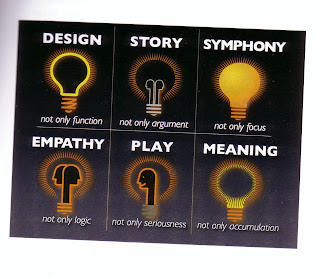Editor’s Note: Today’s feature is a guest article from Jenny Blake, author of Life After College.
If you earn a living from creating — thinking, speaking, writing, coaching, or other — then you owe it to yourself (and your audience) to structure your time in a way that facilitates your best work.
But for some creatives, particularly those without traditional jobs, the freedom of unstructured days can simultaneously serve as our most welcomed blessing and formidable challenge.
I experienced this firsthand when I
left my job at Google to pursue life as a solopreneur. While working at Google, my schedule was always the same: wake up, work out, eat breakfast, go to work, take a yoga class, eat dinner, go home, and unwind by watching TV while working on my blog and book. Although I was quite busy, life was predictable and plannable.
After my exit, I floundered within my new-found freedom. I woke up every day without a plan and without the familiarity of my daily routines. Such independence was exhilarating at first, but it soon became overwhelming. I found myself stuck in the same habits that drained my energy at my corporate gig — reacting all day long to emails and requests instead of creating habits that enabled me to do my best work.
I had allowed myself to become distracted. The only remedy was to re-learn some of the timeless productivity habits that all creatives know, love, and
should use.
My
focus was upon the following five tips from some of my favorite productivity thought-leaders. I’ve re-applied their message to be relevant to those whose primary job it is to create. Odds are you’ve heard these before. But if you struggle with structuring your day effectively, consider what suggestions might be worth revisiting.
5 Classic Productivity Tips Every Creative Should Experiment With
1. Choose 1-2 “big rocks” to tackle each day that will move your business forward (7 Habits of Highly Effective People by Steven Covey)
The basic idea behind Covey’s “big rocks” concept is to think of your day as a bucket.
If you fill your bucket with little rocks and tiny grains of sand (emails and reactive tasks), there is no room for the big rocks (high priority or otherwise important projects). It is a lot harder to squeeze in big rocks when your bucket is already full of sand. However, if you deal with the big rocks first, the smaller rocks and sand will easily fill the remaining cracks and crevices until your bucket is full.
What are your big creative rocks at the moment? You should always have a good idea of what the biggest rocks for your business are, and how the medium and small pebbles fit within them.
2. Start each day (or work session) by “eating a frog” (Eat that Frog! by Brian Tracy)
Similar to Covey’s concept above, Tracy says if you “eat your frog” first thing in the morning, you will feel more productive and operate with a clearer conscience for the rest of the day. This creates a strong mental discipline of working on your most important things first. It’s called a frog for a reason — it’s the task you are most likely to procrastinate on, usually because it’s importance is exactly what makes it intimidating.
So get in the habit of tackling these big frogs first, and watch your productivity confidence and discipline soar.
One technique that has been working well for me is to split my day into two chunks: morning and afternoon, then tackle one frog per half to get me going.
And don’t forget: “If you have two frogs, eat the ugliest one first.”
3. Single-task: do one thing at a time and be fully present for each task. (Focus by Leo Babauta)
Babauta is a huge proponent of single-tasking as the key to increased focus and productivity.
So listen to your body; identify your most creative period of the day and structure your most important work in that window of opportunity. Start by writing 1-3 big tasks on a post-it, then focus on doing just one thing at a time. When you finish, move on.
Many of us fall into the bad habit of starting in on a big task (or frog), then getting ourselves sideways with distracting emails, social media alerts, and other accursed Pings. Fight this most derailing of temptations by embracing single-tasking: close all windows that are unrelated to the task at hand as a reminder not to procrastinate or distract yourself mid-task.
Something that has saved my sanity in recent weeks is restricting my meetings to Tuesdays and Wednesdays only (with a few rare exceptions). I point people to my
Tungle.me calendar to schedule, and they can almost always wait until the next available time. This allows me to focus on uninterrupted work on my own schedule during most of the week, and yet still makes me available (and focused!) on meetings two days a week. In the future I may even reduce my meeting schedule to just one day.
4. Manage your energy, not your time (The Power of Full Engagement by Jim Loehr and Tony Schwartz)
Despite the hundreds of productivity books and blog posts that emphasize effective time-management, Schwartz recommends that we focus on managing our energy not our time.
Rather than treating our life and
businesses as a marathon, Schwartz advises we treat them as cycles each complete with a sprint and recovery period. We all know we are going to have big creative sprints — that’s what makes pursuing a project or business so exciting. But it’s imperative that we build in equal parts recovery.
Listen to your body when it tells you to throttle back or even disengage for a while.
This habit applies equally to month-long projects and day-long work sessions. Rather than working straight through the day (and risking creative burnout), experiment with working in 45-minute spurts, then taking 15-minute breaks (even better if you can get outside!). You could also set various task-related goals, then build in a short break after you complete each one.
5. For your biggest projects, identify every single task you need to complete; get it out of your head and onto a piece of paper (Getting Things Done by David Allen)
Allen enlightened many of us by reinforcing the idea that our minds should be used for
high-level thinking and processing, not storing items in a to-do list.
It is almost impossible to do your best work if your brain is cluttered with tasks and action-items, or if you have to keep re-thinking what your next steps are on your biggest projects. Remove the clutter in your brain by developing systems for capturing next actions and reminders so you can free up your pre-frontal cortex for more exciting and creative pursuits.
For all of you planners out there looking for a structured way to do this:
check-out my Project Plan template that will help you break-out major milestones and related tasks, then track their progress.
Allen’s teaching aligns nicely with one of my favorite quotes from
Todd’s book is, “All minutes are not created equal.”
It is incumbent upon us to be highly selective with how we spend our time so that we can give ourselves every opportunity to produce our best work on a regular basis. This quote also speaks to the importance of establishing routines that allow us own our days — not have them own us (the phrase “wag the dog” comes to mind).
And what of me?
My first month of solopreneurship got off to a somewhat rocky start as far as my creativity was concerned — some days I would wake up blessed with ideas! On fire! In the zone! And others I would feel lethargic, lazy, and overcome with a burning desire to do…NOTHING.
That changed when I re-learned these simple habits, and generally being more thoughtful about my routine and rhythm as I did so.
I started eating better, established a new a workout routine, and re-applied the advice above. No surprise then that my productivity became more predictable and much more creative. I now run first thing in the morning, do my best proactive work (and biggest frog frying) in the early part of the day, then get to emails and reactive work later on.
I’ve also reduced meeting days to Tuesdays and Wednesdays, which helps me stay keenly focused on the other days of the week. I’d estimate that these habits and routines have quadrupled my output and productivity — and my overall happiness as a direct consequence.
So what about you?
The timeless productivity habits above are classics for a reason….they work!
However, they may not all work for you. The most important consideration as you delve into the mystique of your creativity is to become an observer of your own life. Think critically and ask the big questions…
What habits allow me to maximize my creative output?
What one or two adjustments would have the most profound positive impact on my productivity?
Why am I, truly, avoiding the big projects (frogs) that I know are most vital to my future?
No two answers will ever be alike. But to thrive as an Accidental Creative, all answers must be honest.
Do yourself the courtesy of honoring your
creative opportunities.
Be productive to be prolific.
Article from the website http://www.accidentalcreative.com/













